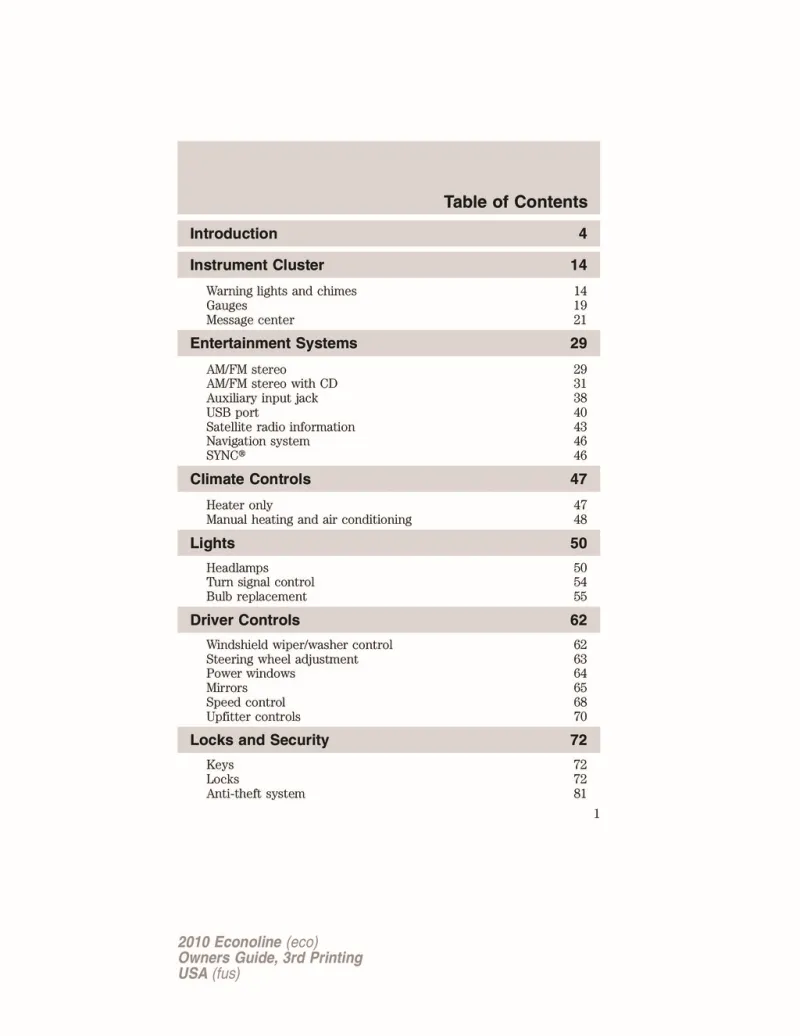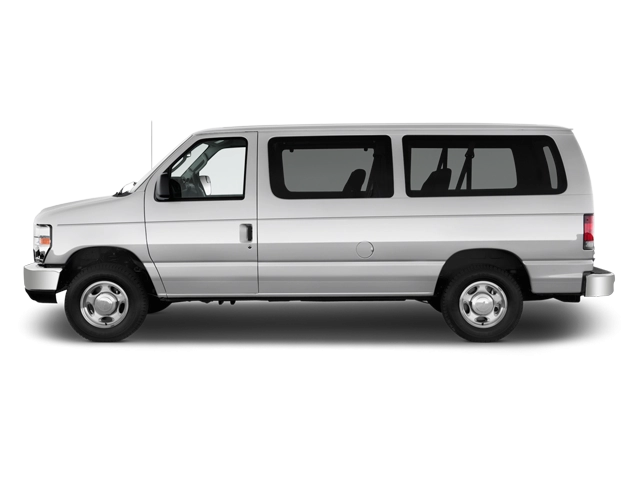2010 Ford E450 Owner's Manual

Table of Contents
2010 Ford E450 Overview
Introduction
The 2010 Ford E450 is a heavy-duty cutaway chassis designed for commercial use, offering versatility and reliability for various applications, from shuttle buses to camper vans. Known for its robust construction and spacious interior, the E450 is ideal for businesses and organizations that require a dependable vehicle with ample payload capacity. With a sturdy platform and a reputation for durability, it continues to be a popular choice in the commercial vehicle market.
Powertrains
Under the hood, the 2010 Ford E450 offers two potent powertrain options. The standard 6.8-liter V10 engine delivers 305 horsepower and 420 lb-ft of torque, making it capable of handling heavy loads with ease. For those seeking improved performance, the optional 6.4-liter turbocharged diesel engine produces 300 horsepower and an impressive 660 lb-ft of torque, providing excellent towing capabilities and fuel efficiency. Both powertrains are mated to a smooth-shifting 5-speed automatic transmission, ensuring a steady ride on the road and seamless handling.
Trims
The 2010 Ford E450 comes in multiple trims, catering to specific customer needs. The base trim offers essential features designed for utility, while higher trims provide a series of upgrades and comfort features that enhance the driving experience. Options such as enhanced seating, air conditioning, and advanced audio systems can be added to tailor the vehicle to an individual's requirements.
Features
The E450 is equipped with a host of features aimed at maximizing comfort, safety, and usability. Standard features include stability control, antilock brakes, and a fuel-efficient low rolling resistance tire design. Additional options can include upgraded interior materials, power windows, and advanced infotainment systems, making this vehicle not just functional but also pleasant to drive.
Owner's Manual
The owner's manual for the 2010 Ford E450 serves as a comprehensive guide for drivers, detailing maintenance schedules, operational instructions, and safety information. It ensures that owners can keep their vehicle in optimal condition while providing insights on how to maximize the performance and longevity of their E450. Available in both print and digital formats, the manual is an essential resource for any owner of this powerful cutaway chassis.
User manual download
The Ford E450 owner manual for the 2010 model year is to be found in PDF downloadable format on this page. The owner manual for the model year 2010 is free and in English, but the repair manuals are usually not easy to get and may cost more.
Manual Questions
Fill the form below and someone will help you!

